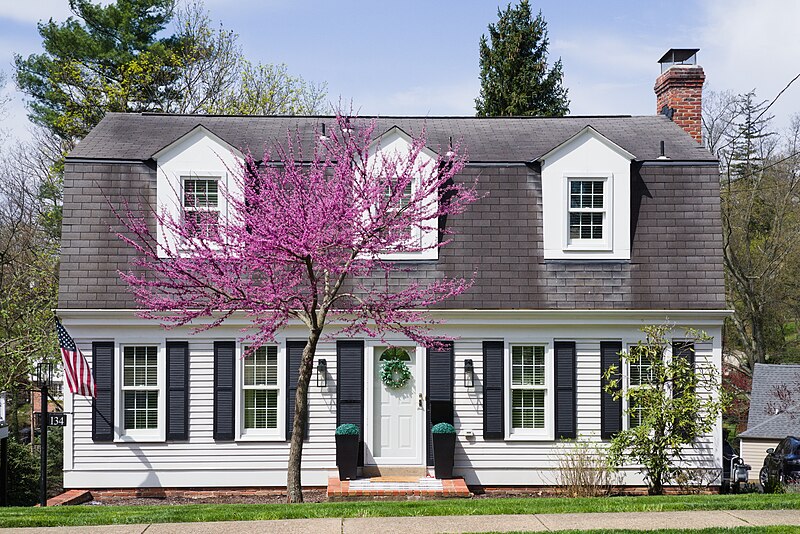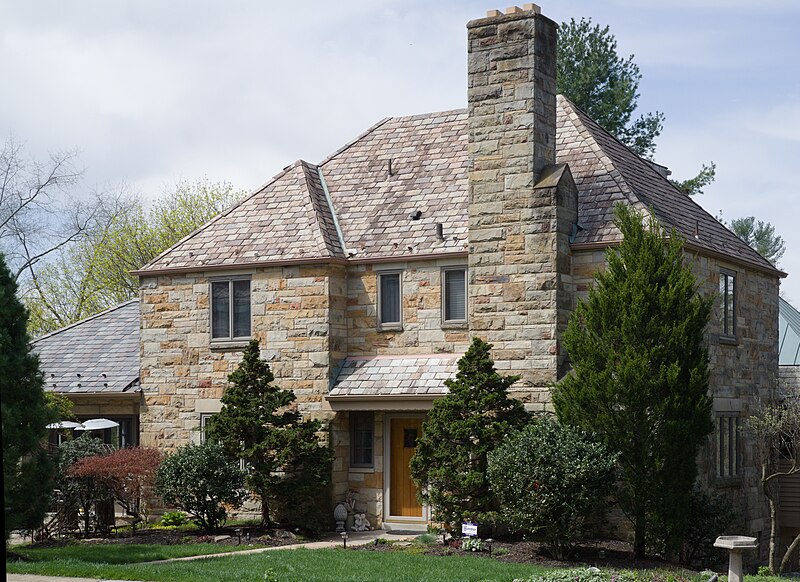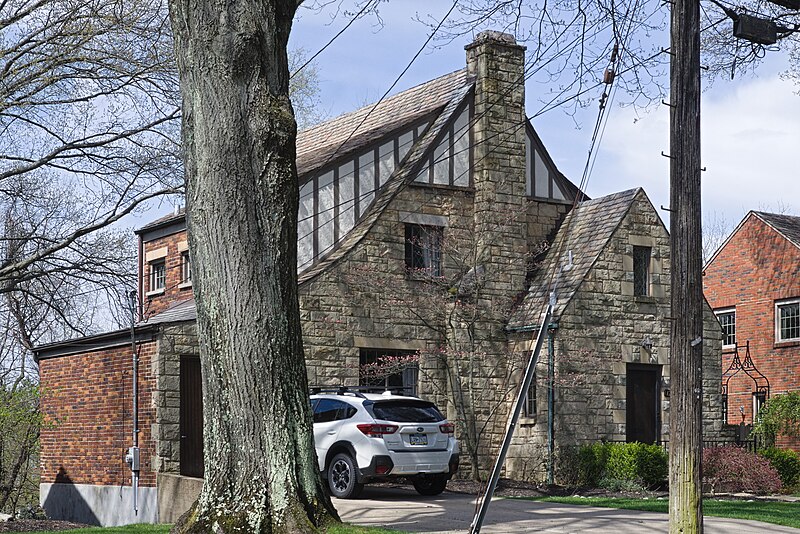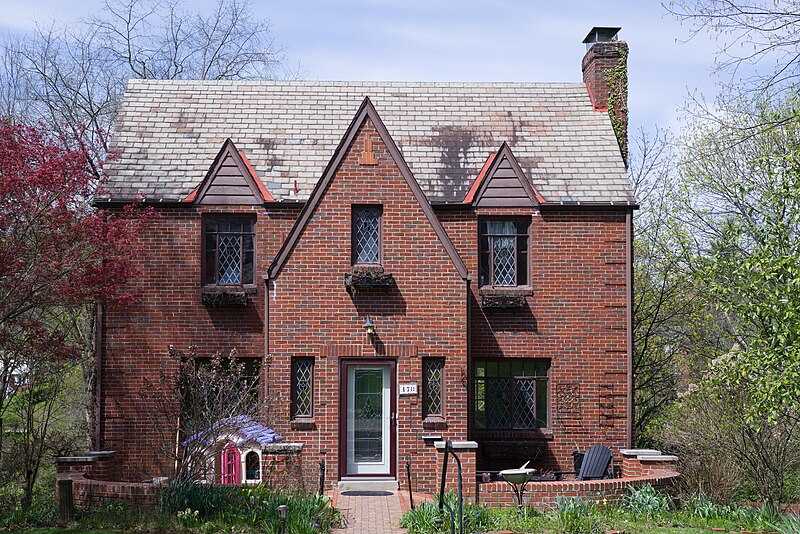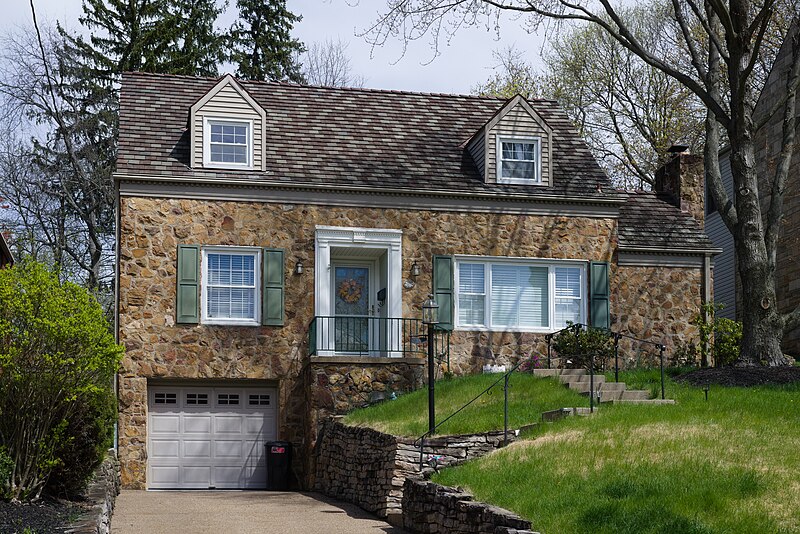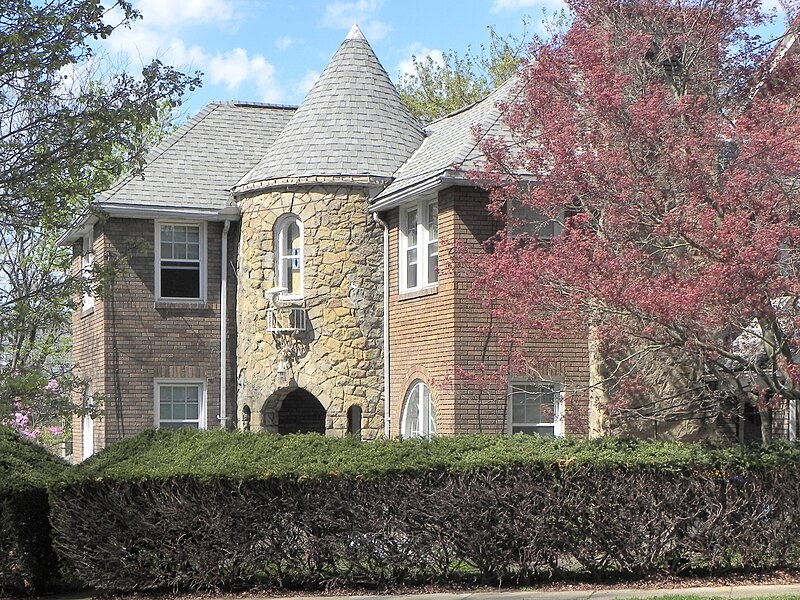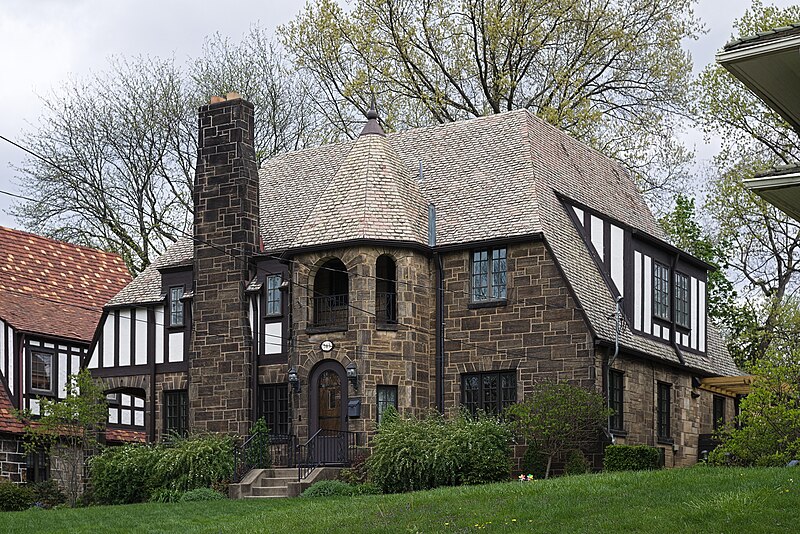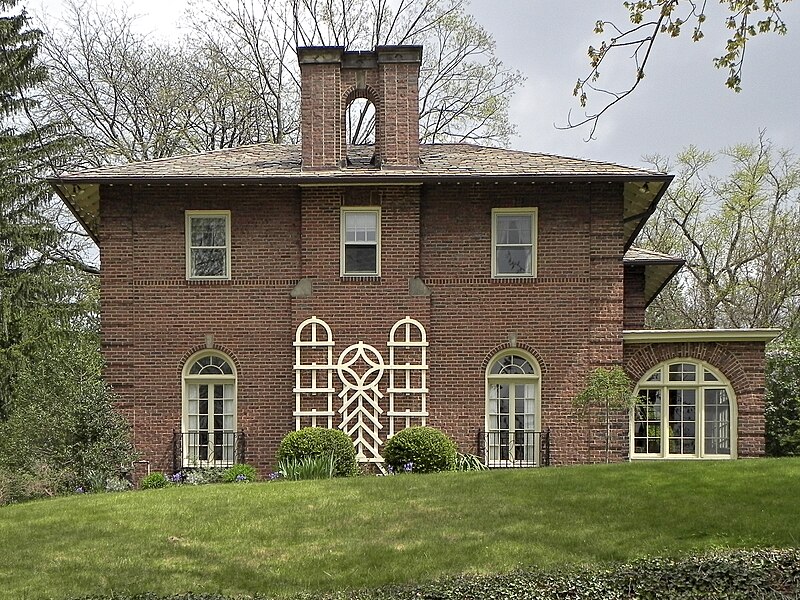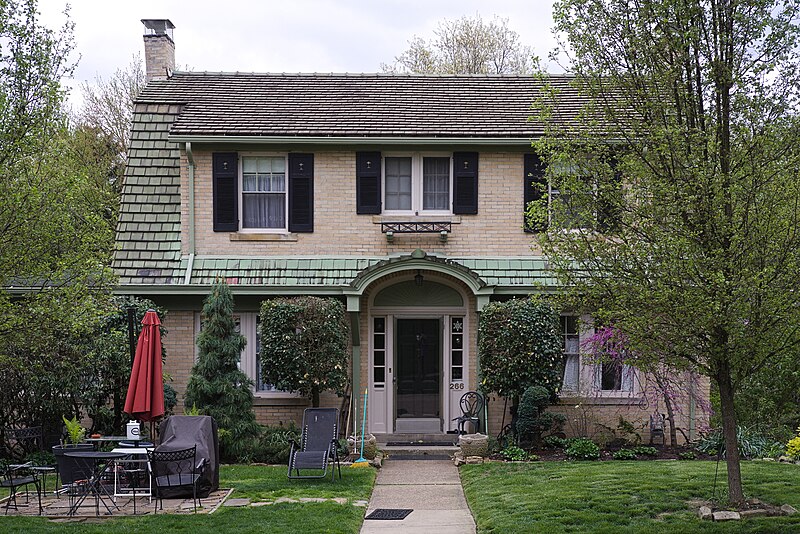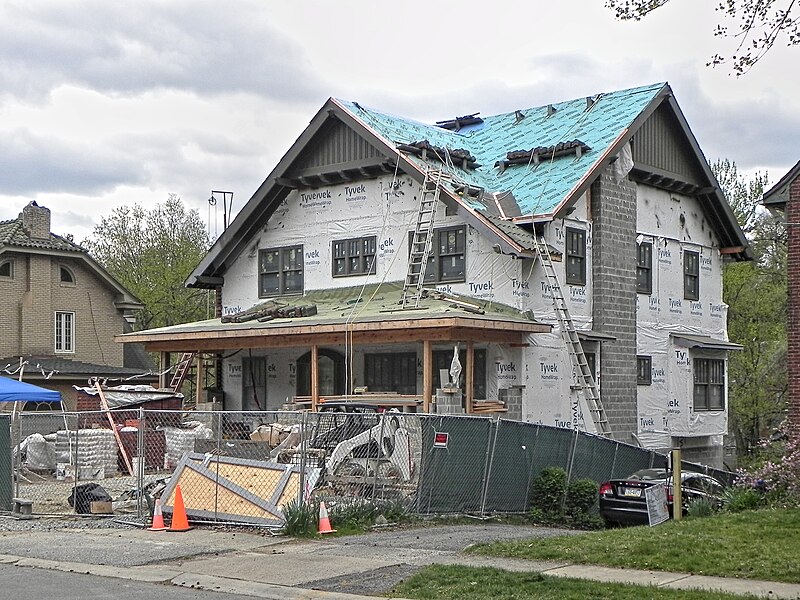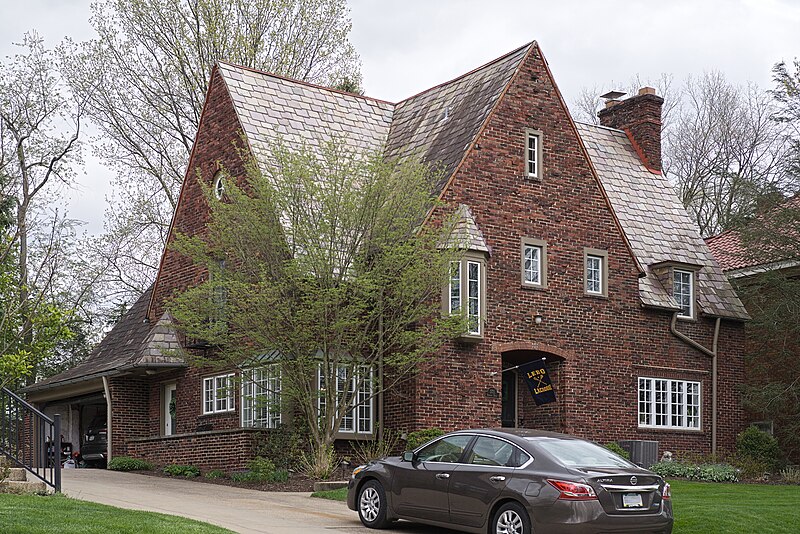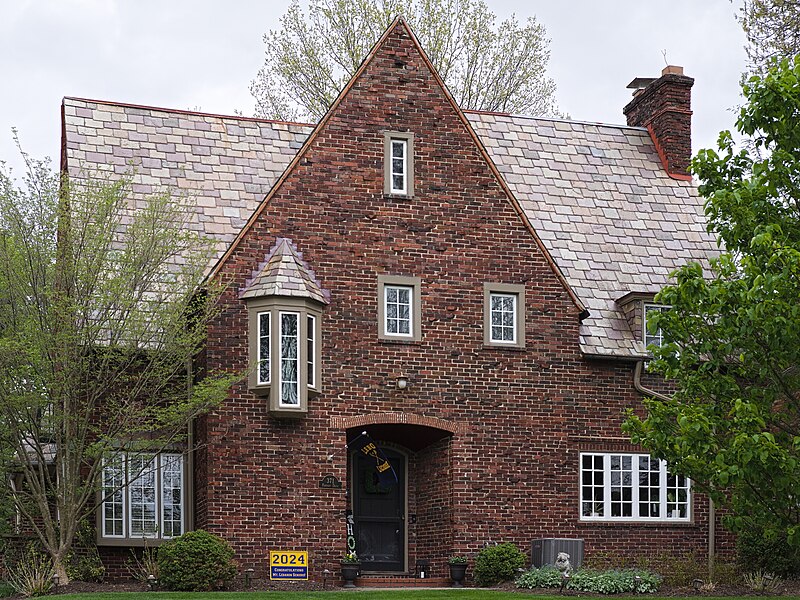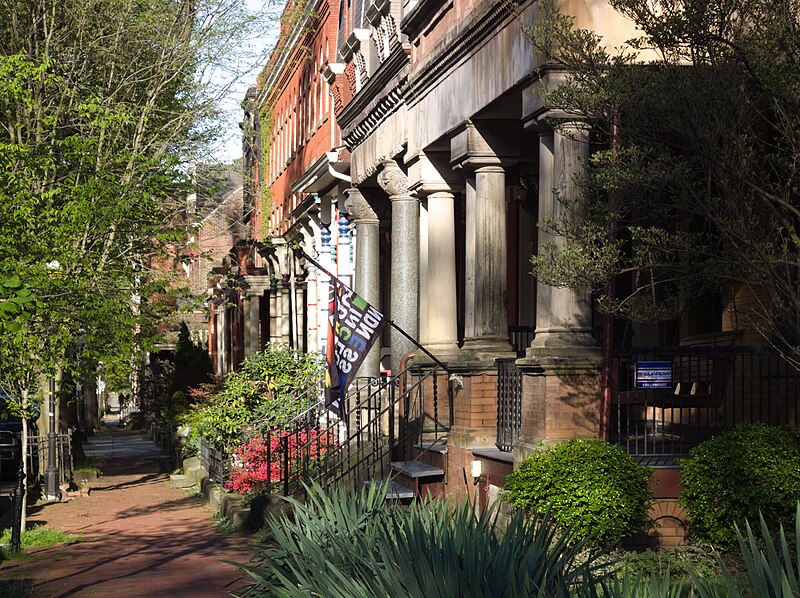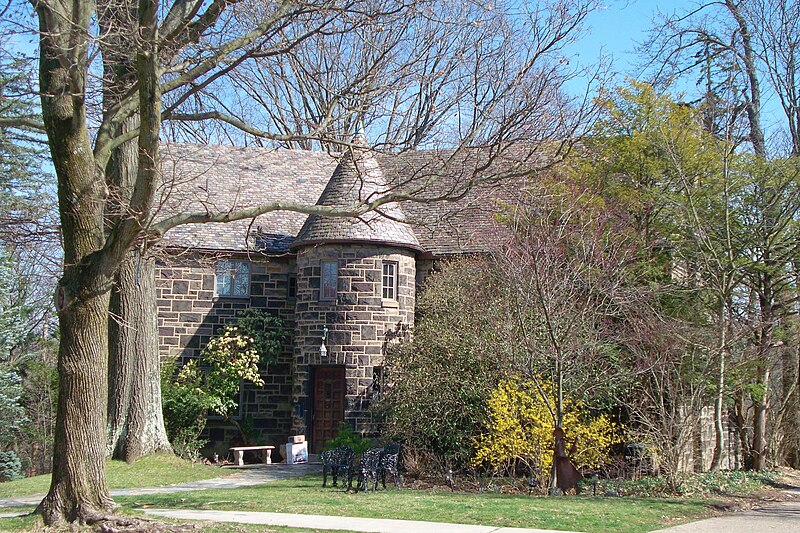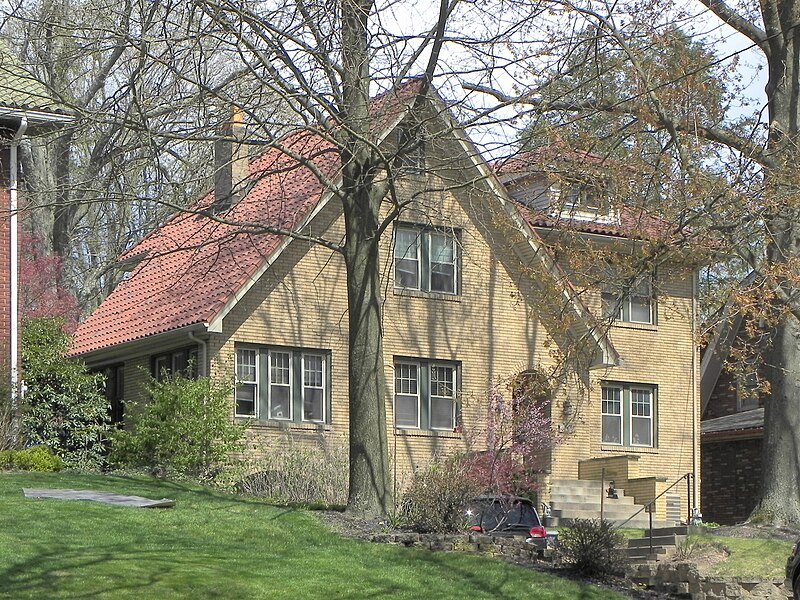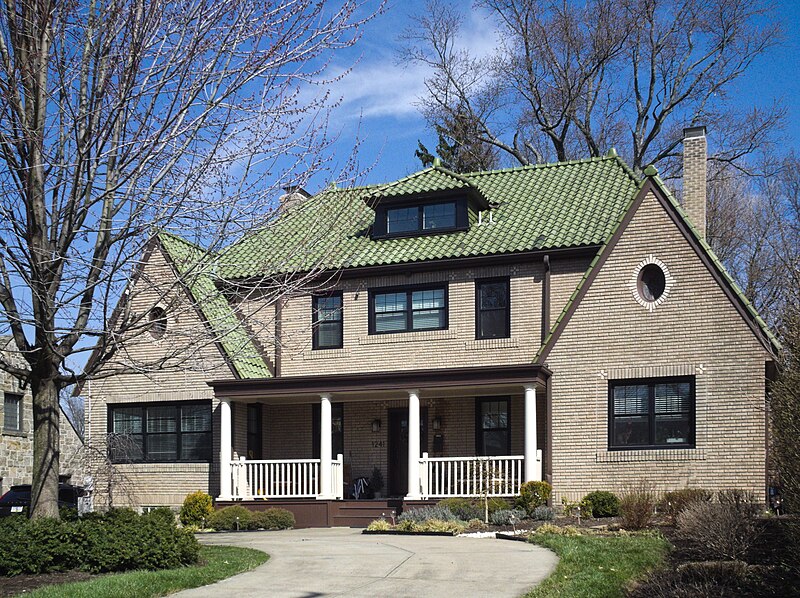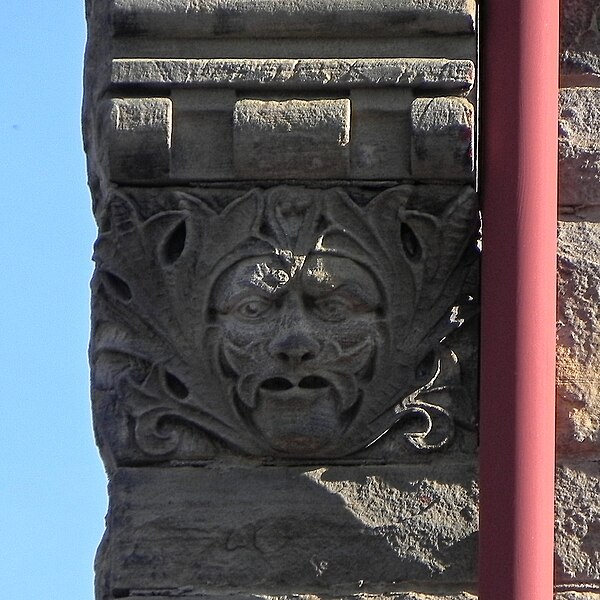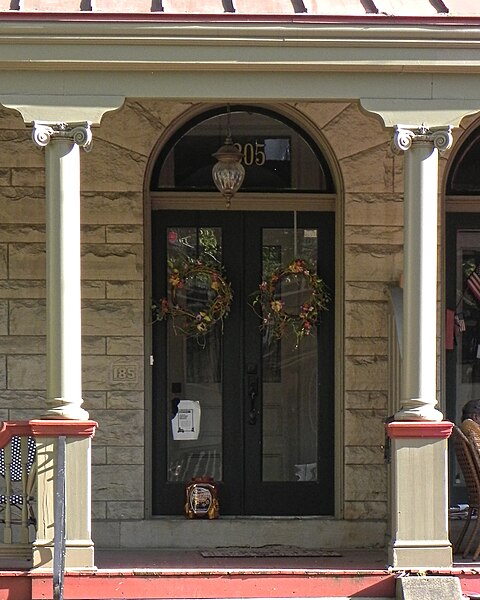
In 1913, George Best decided to develop a little square of land in Oakmont by subdividing it into tiny lots and putting up modest but attractive houses. To manage the modest-but-attractive part of the scheme, he hired architect George Schwan. In American architectural history he is perhaps most famous as the architect of most of the buildings in the original section of the Goodyear Heights neighborhood of Akron, beginning in 1917. This earlier development is on a more modest scale, but it also involved putting up a bunch of houses at once with enough variation to make the neighborhood attractive.

The plan had twenty-eight of these houses in four rows of seven. This Sanborn Fire Insurance map from 1921 shows the layout:

Seven houses on one side of Second street, seven on one side of Third, and fourteen somewhat smaller houses on both sides of the narrow alley Beech Street.

Originally the houses were brick on the first floors and shingle above, and they would have been charming in their modest way. Over the years the shingles have been replaced with aluminum and vinyl siding, but enough of the original character remains to show what Schwan had in mind.

These are not great works of the imagination. They are, however, a good solution to the problem posed to the architect. How do you cram as many detached houses as possible into a little square of land and still make them seem attractive? The answer is to vary a few basic designs, and thus create a streetscape with a rhythm that is not strictly repetitive, while at the same time creating a neighborhood that obviously goes together.




The real test is time. For more than a century, every single one of these houses has stood and been loved by its residents. Not one has gone missing. By the most reasonable standard, George Schwan’s project was a success, and Mr. Best certainly got his money’s worth from the architect’s commission.



